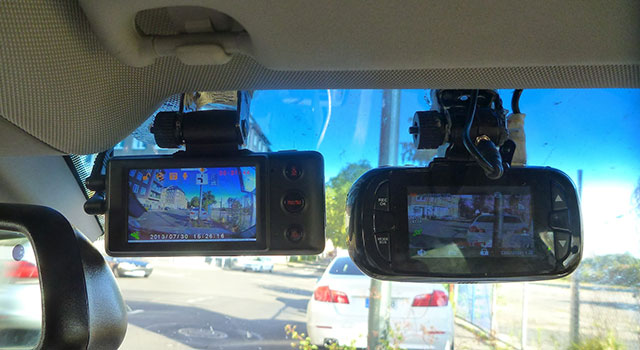 Before I moved house earlier this year, I used to drive along a road to the office that snakes through the northern suburbs of Johannesburg. As with most suburban roads in this part of the world, traffic can get a little out of hand during peak hours.
Before I moved house earlier this year, I used to drive along a road to the office that snakes through the northern suburbs of Johannesburg. As with most suburban roads in this part of the world, traffic can get a little out of hand during peak hours.
Although I certainly don’t mind spending some time stuck in a jam, I used to get rather agitated at the sight of vehicles — taxis to be specific — whose drivers take it upon themselves to drive on the opposite side of the road, into oncoming traffic, just to beat the 10-minute wait as cars clear the traffic lights at the end of the road.
Besides being illegal, this behaviour is of course incredibly dangerous. Yet the law breakers did not seem to care much, apparently not worried about being bust by the traffic police, as they rushed down the wrong side of the road.
Every morning, like clockwork, one driver would jump out of line, usually followed by one or two others who felt they were also privileged enough to break the law in lieu of the short wait in line.
Eventually, I decided to start recording the perpetrators with my cellphone mounted appropriately on my windscreen in order to capture the lawlessness. I had no intention of using the footage for anything other than sharing it on YouTube someday when I get around to compiling it for my own amusement.
During the five months that I recorded my daily commute, I witnessed countless violations of the law. One morning, close to my office at the time, I managed to record a vehicle accident when a car failed to stop at an intersection that was clearly marked. The footage I captured showed that the person who caused the accident failed to slow down, and in fact sped up as the traffic light turned red. Fortunately, there were no serious injuries.
Knowing that I had just captured the accident, I pulled to the side of the road to assist and to let the drivers of both vehicles know that I had captured the entire event on camera. Before I could start the conversation, the person who caused the accident promptly started to blame the driver of the other car. An argument had ensued just before I revealed that I caught it all on my cellphone “dash cam”. Showing clearly who was at fault, the driver in question admitted liability and both parties shared their details amicably.
I have since heard of many similar situations on South Africa’s roads where accidents and even police corruption have been captured in a similar fashion by camera-armed drivers.
In Russia, dash cams have become a part of the daily commute. It is estimated that more than a million Russian motorists have dashboard video cameras installed in their cars. The country’s affinity for dash cams stemmed from the need for citizens to protect themselves from police corruption and insurance fraud.
On the flip side of the coin, London’s metropolitan police announced plans to roll out a pilot scheme to equip officers with wearable video cameras. According to assistant commissioner Mark Rowley, the police will use the technology to help convey the “rawness and awfulness” of some of the situations that officers find themselves in, as well as assisting them in identifying perpetrators and recording vital evidence.
These two examples show how wearable video camera technology and in dash cams are driving the need for people and organisations to protect themselves from incidents such as those described above.
The technology is effectively allowing for both the public and the authorities to record valuable details of an incident or altercation. Although South Africa is behind the curve in using wearable and in-car camera tech, there is little doubt it will proliferate in the next few years.

If you consider the frequency of allegations levelled against both the metropolitan police and the South African Police Service, using this technology seems to be a no-brainer.
But what about privacy?
Dash cams work quite a bit differently to the average photo or video camera, and privacy only comes into play when the camera is removed from the vehicle. A dashboard camera generally records in a loop. When the memory card fills up, the camera records over the oldest footage first. The footage is only accessed when the details of an incident need to be reviewed.
The wearable camera technology used by police officers works in the same way. Footage is continuously written over as the officers are on patrol. Only footage that will be used to file an incident report is backed up to servers for later retrieval.
We have already seen an increase in the number of surveillance and traffic monitoring cameras in urban areas around South Africa. Expanding this by recording incidents around you seems harmless enough. You’ll only need to recall the footage of an incident once to understand how valuable it is. — (c) 2014 NewsCentral Media
- Regardt van der Berg is senior journalist at TechCentral. Find him on Twitter

